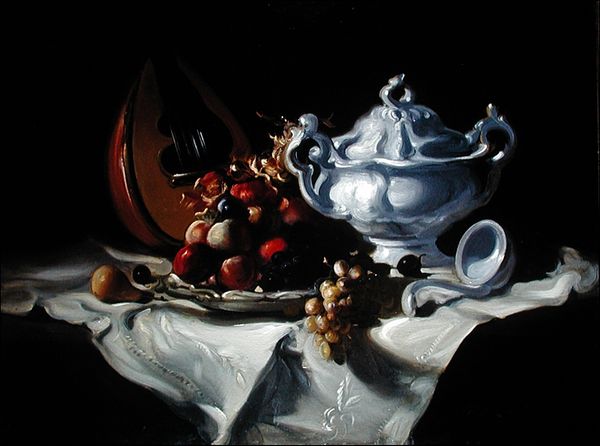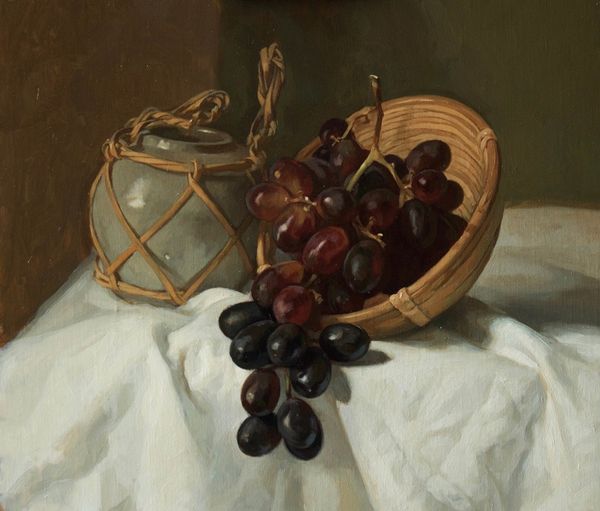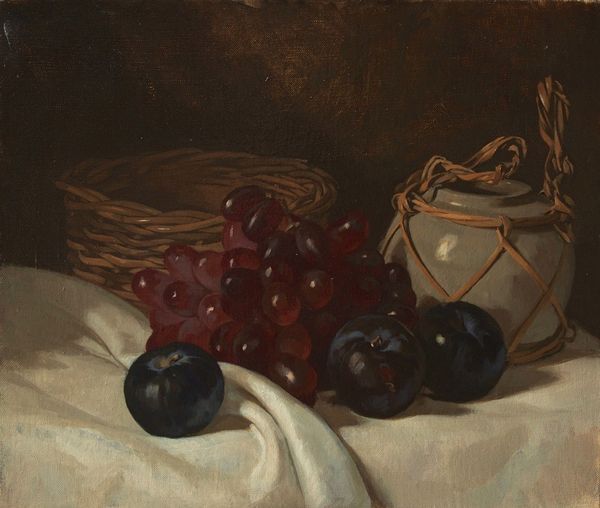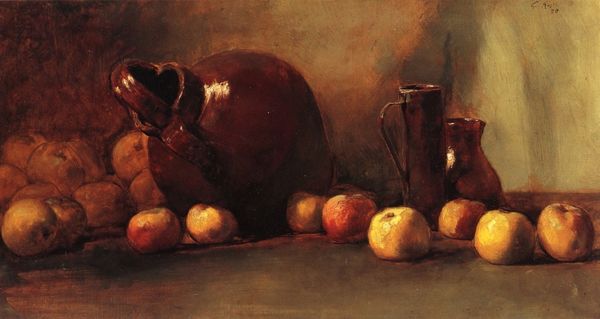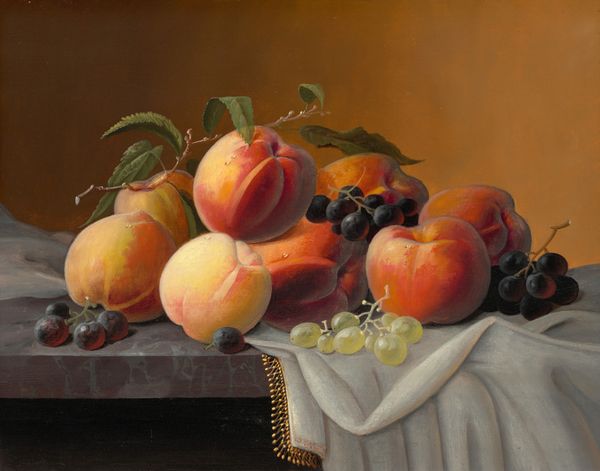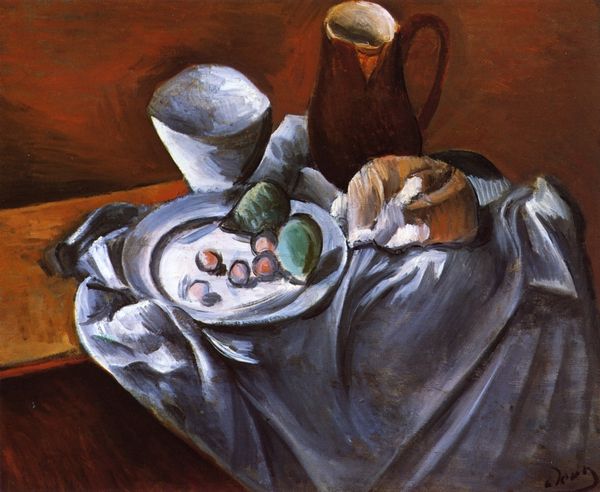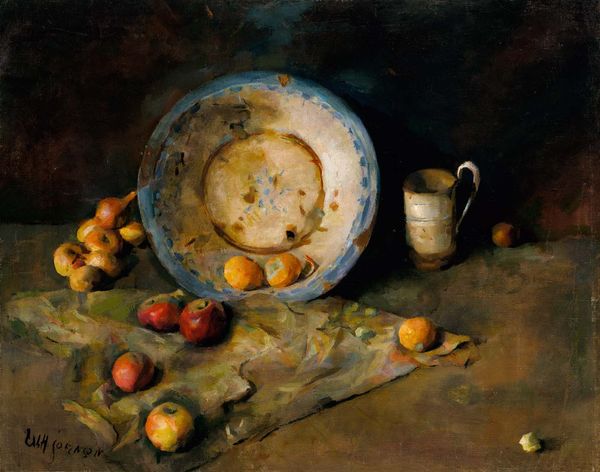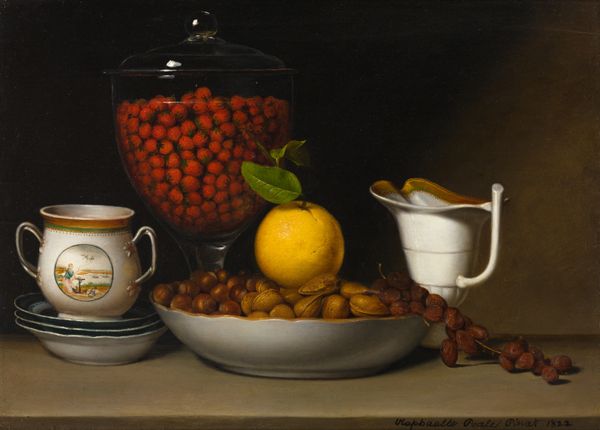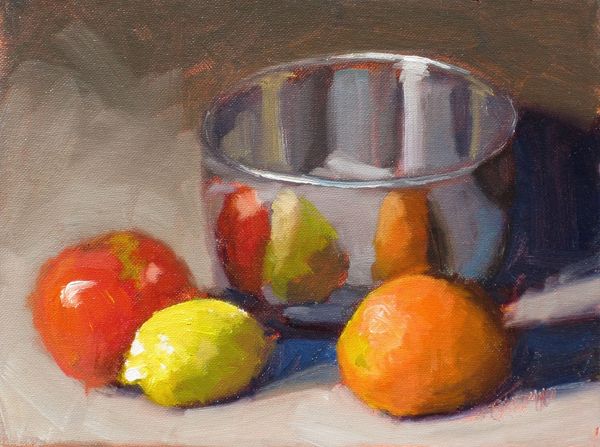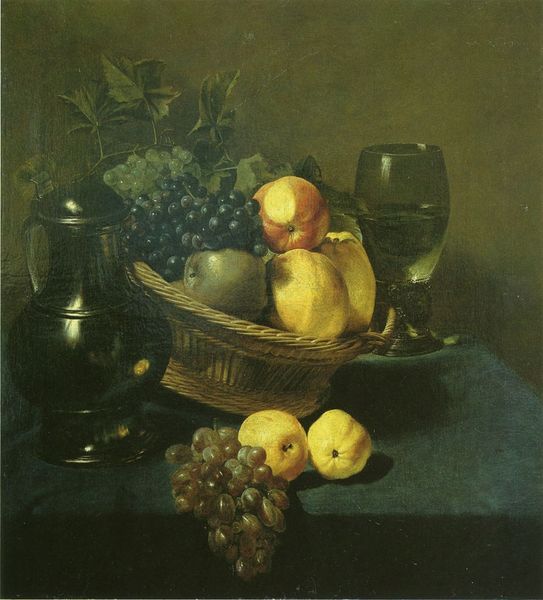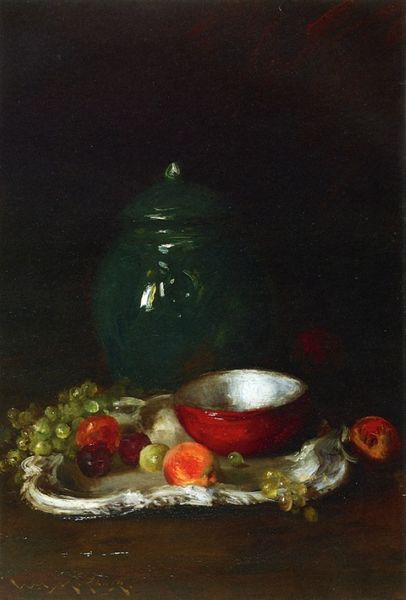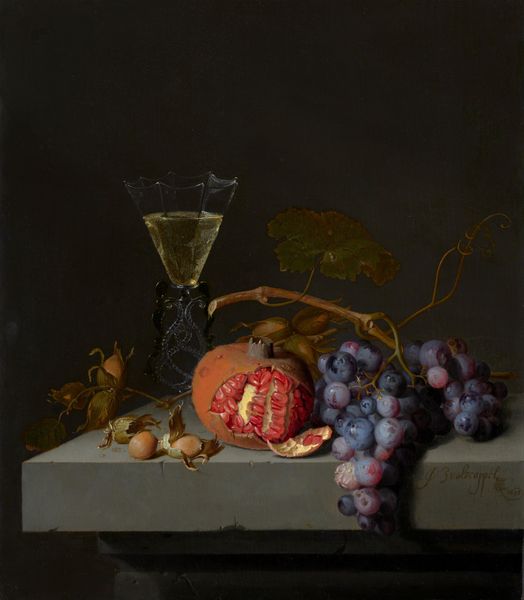
photography
#
still-life
#
egg art
#
possibly oil pastel
#
photography
#
oil painting
#
fluid art
#
fruit
#
coffee painting
#
animal portrait
#
food art
#
animal drawing portrait
#
surrealist
#
watercolor
Copyright: Frank Mason,Fair Use
Curator: Welcome. Today, we're examining Frank Mason's 2005 still life, "Beanpot, Grapes & Lemons." Editor: It strikes me immediately as a scene of muted abundance. There's something almost secretive about the way the light plays across those fruits, especially given the rich dark background. Curator: Right. Mason positions ordinary, domestic items to evoke deeper readings. He seems less interested in simple representation and more attuned to triggering associated feelings through subtle signifiers. How do you see these domestic signifiers working in the context of contemporary life? Editor: For me, this echoes themes of accessibility versus the perceived exclusivity in accessing and maintaining such curated opulence. Especially with that stark, perhaps unintentionally ironic contrast of vibrant fruit set atop something tattered, discarded even. Curator: Precisely. Considering still lifes, as a genre, developed in tandem with the rise of mercantile capitalism, with all that such economic systems imply about societal hierarchies, and its ongoing consequences into present-day wealth disparities, we should really consider how what’s ostensibly art about "things" is usually more accurately about status, consumption, class. The painting style evokes past traditions, but placed in a contemporary framework, one starts to think about issues around production, ownership, labor rights. Editor: So you’re suggesting the fruits might also be props? Curator: Absolutely! They are not mere objects but instead, become metaphors relating to social, political power dynamics that determine one’s access to or lack thereof— resources. And it all revolves around the framing within institutions like galleries or even the art market. Editor: That’s a fascinating take, making what seemed like a tranquil still life a platform for critiquing much broader concerns. I originally saw it as contemplative, maybe a touch nostalgic, but you've given me a new appreciation. Curator: That push-pull of interpretation is what makes this kind of piece compelling—and speaks to how relevant seemingly traditional approaches can remain today.
Comments
No comments
Be the first to comment and join the conversation on the ultimate creative platform.
